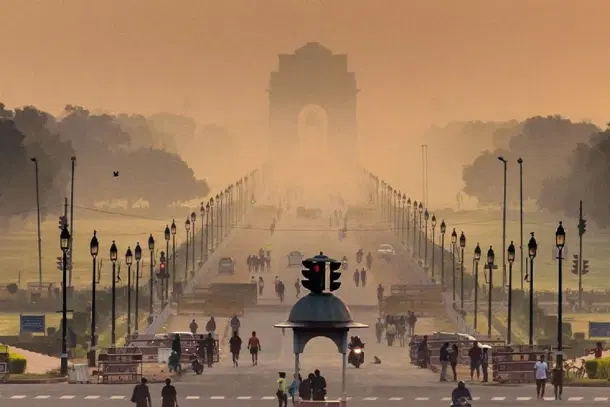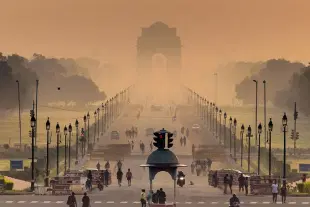Politics
Biomass Burning Contributed Most To Delhi Air Pollution In November Last Year: Study On PM 2.5 Sources Reveals
Bhuvan Krishna
Nov 09, 2023, 01:10 PM | Updated 01:10 PM IST
Save & read from anywhere!
Bookmark stories for easy access on any device or the Swarajya app.


A study by IIT-Kanpur, IIT-Delhi, and TERI on sources of Particulate Matter (PM) 2.5 in Delhi during last winter was presented to the state government in September.
According to the study, biomass burning contributed the most to PM 2.5 levels in November, accounting for 36 per cent, while in December it accounted for 21 per cent.
The study also estimated that crop residue burning contributed an average of 22 per cent to PM 2.5 levels from 1 to 25 November. This can be seen in context of concerns raised over stubble burning.
According to a real-time source apportionment study report, the highest contribution to PM 2.5 in Delhi during the previous winter was found to be from secondary inorganic aerosols, which are expected to travel from far distances.
During the winter season from 1 November 2022, to 2 March 2023, the average contribution of secondary inorganic aerosols was 32 per cent. Biomass burning, both within and outside Delhi, accounted for 24 per cent of the pollution, followed by 17 per cent from vehicles and 7 per cent from coal and fly ash.
Domestic sources contributed around 3 per cent, while soil and road dust made up 2 per cent of the pollution.
According to the study conducted at Sarvodaya Bal Vidyalaya, Rouse Avenue, the contribution from construction and industry at the site was estimated to be zero per cent.
During the winter season, the report states that secondary inorganic aerosols originating from sources within Delhi, within a radius of 30 km from the supersite, account for 16 per cent of the total contribution.
The remaining 84 per cent of these aerosols are found to come from outside of Delhi.
During the winter season, January had the highest average PM 2.5 levels at 217 µg/m3, making it the most polluted month. Following closely behind was November with an average of 210 µg/m3.
Notably, with a study in hand on the sources of pollution since September, AAP Minister Atishi claimed in October that there is no official data available that can pinpoint the various sources contributing to the pollution levels in Delhi.
The real-time study, which was initiated by Environment Minister Gopal Rai, has been put on hold due to concerns raised by the DPCC chairman regarding the project's cost and its findings.
On Wednesday, Rai announced that the study, which had previously been sharing data on an online dashboard, will recommence on Thursday, Indian Express reported.
Bhuvan Krishna is Staff Writer at Swarajya.





